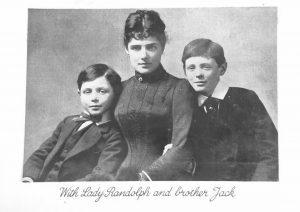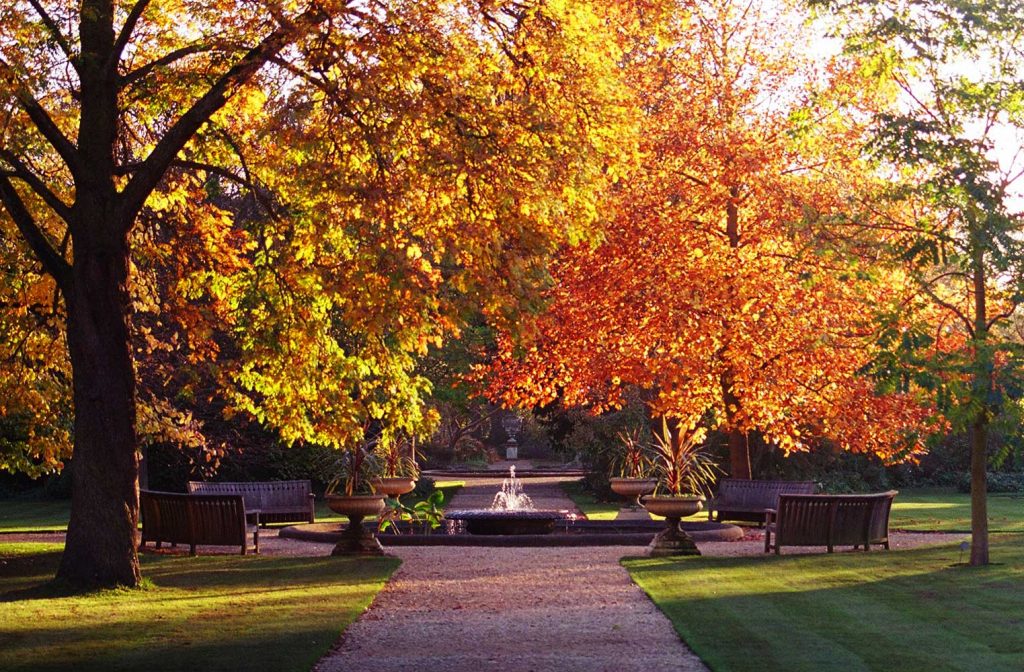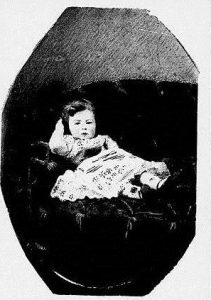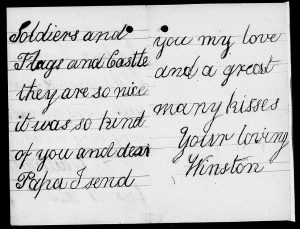
Finest Hour Extras
Winston Churchill, Oxfordshire, and Ditchley Park

Oxford Botanic Garden in Autumn about 30 minutes drive from Ditchley Park
October 17, 2014
By Ashley Jackson
Ashley Jackson is Professor of Imperial and Military History at King’s College London and a Visiting Fellow, Kellogg College Oxford. This article is the unabridged version of a briefer, unfootnoted account in Finest Hour 165, Autumn 2014. Ditchley Park was a venue for the 2015 International Churchill Conference.
This article has two points of origin. The first was the desire to explore Winston Churchill’s Oxfordshire connections more thoroughly than is usual in biographical accounts of his overloaded life. The second was the invitation of the Churchill Centre (UK) to give a talk at Ditchley Park on the 139th anniversary of Churchill’s birth. This afforded an opportunity to conduct further research into Churchill’s wartime visits to this secluded Oxfordshire estate, the results of which are presented in this article. [1]
Like many famous individuals, Winston Churchill’s name is associated with numerous geographical locations. He was a freeman of numerous towns in Europe and beyond, and an acclaimed visitor to a diverse range of places including the White House, the Atlas Mountains, the French Riviera, Cairo, Marrakech, and Tehran. He is most famously associated with London, the political heartland to which he was tethered for over half a century, the city in which he resided for much of his life and in which he died. Second to that, his purchase of Chartwell in 1924 forged an abiding link with Kent, and his delight in the place (as well as Clementine’s comparative despair) is well-known. But Oxfordshire also has a claim on this most famous of Britons, and not just because of his birth in Blenheim Palace and burial in the nearby churchyard of St Martin’s Bladon. The county’s claim rests on additional factors, such as the sense of place and of English history that Churchill developed during childhood days in idyllic Oxfordshire surroundings, his family’s links with the town of Woodstock that adjoins the Marlborough estate, and his service in the yeomanry regiment the Queen’s Own Oxfordshire Hussars. [2]

2025 International Churchill Conference
It is clear that Churchill retained a lifelong affection for his place of birth, and chose to be buried in the family grave rather than under the croquet lawn at Chartwell. He was a regular visitor to Blenheim, for social and family events and for occasional periods of research when writing biographies of his father and the 1st Duke of Marlborough. As a young politician rising rapidly through the ministerial ranks, Churchill remained a regular visitor to Oxfordshire. As an officer in the Queen’s Own Oxfordshire Hussars, he attended exercises at Blenheim and other estates in the county, switching from the Woodstock Squadron to the Henley Squadron, the latter town, in south Oxfordshire, being closer to London. [3] Service with this territorial unit allowed him to maintain his military skills, to prepare his men effectively for the trials that were soon to come in the First World War, and to keep up links with family members, such as his cousin the Duke of Marlborough and his brother Jack, and friendships with men such as Valentine Fleming, all brother officers in the regiment.
This article examines a specific Churchill link to Oxfordshire: the role played by Ditchley Park and it Georgian mansion house as a wartime prime ministerial residence and headquarters. It explores the rhythm of Ditchley life when Churchill and his entourage were in residence, and the manner in which the Prime Minister relaxed here while retaining control of Britain’s war effort, including communications with ministers, chiefs of staff, field generals, and heads of state, notably Franklin Roosevelt. In the early years of the war when the air threat was at its greatest, Ditchley became an office from office, as well as a home from home, for Churchill. It was a gathering place for his family, his cronies, his work colleagues, and important Allied leaders and emissaries. The study affirms the frenetic pace at which Churchill conducted his life and his penchant for social activity to relieve wartime worry and drabness, Ditchley weekends providing country house stimuli and more mixed company than was customary at Chequers. Dining and watching films, occasionally strolling in the tranquil grounds, viewing the fallow deer that roamed the parkland, motoring the short distance to his Blenheim birthplace for lunch or tea – these were the activities shoehorned in around intense bouts of war-related work. [4] For even though Ditchley weekends brought respite from blitzed London and the maelstrom of war, Churchill sustained the Stakhanovite work rate that amazed and taxed those closest to him, and that helped the Allies win the war. “Week-ends were anything but restful”, noted Harry Hopkins’ biographer, “due to the incessant concern of Churchill with everything that was going on everywhere”. Whilst Roosevelt could get away from it all now and then, “Churchill never even wanted to try”. [5]
Though not on the scale of the Blenheim behemoth – only one or two residences in Britain are – Ditchley was and remains a most impressive stately home set in beautiful grounds. In the words of General “Hap” Arnold, one of Churchill’s wartime visitors whilst staying at Ditchley, it was “a tremendous place, dating back to the 1600s, with extensive lawns, a lake, and big trees and woods checkerboarding its landscape [of] contoured gardens”. [6] The Blenheim and Ditchley Park estates shared connections long before their current residences were built and the Marlborough dukedom created. In pre-Blenheim days, the royal residence of Woodstock Manor stood opposite the current palace, and Ditchley was the seat of Sir Henry Lee, Elizabeth I’s Champion and Master of the Armoury, whom she visited there. The distance by road from Blenheim/Woodstock to Ditchley is four miles, and maps show that the grand avenue that opens before Ditchley House points directly towards the Column of Victory that faces Blenheim’s elongated frontage.
Looking due north-west from Blenheim’s Column of Victory, along the lengthy Grand Avenue of lime trees (which in the 1970s replaced the 686 double-rowed elms that Churchill would have known), one beholds the elegant Ditchley Gate and its gatehouse. Beyond this lies the land of Ditchley Park, owned from 1933 by the millionaire Conservative MP Ronald Tree. Tree and his wife Nancy, niece of Lady Astor, were American-born and of dual nationality, and Ronald had shared Churchill’s concerns about a resurgent and remilitarized Germany and resigned as a Parliamentary Private Secretary in protest over Neville Chamberlain’s policy of appeasement. In 1939 Tree was instrumental in enlisting American help for the British war effort, resulting in the foundation of the British War Relief Committee. By 1940 Tree was again a Parliamentary Private Secretary, this time to the Minister of Information, Sir John Reith, continuing to hold the position under his successors Duff Cooper and Brendan Bracken, Churchill’s protégé. Meanwhile, Nancy organized and ran a mobile canteen unit from Ditchley which visited cities in the aftermath of German raids.
The Prime Minister lands at Ditchley Park
At the Trees “beautiful and secluded house, Churchill was to spend many of the weekends when the moon was full”. [7] It was here, in Churchill’s words, “at their large and charming house near Oxford”, that the Trees “made me and my staff very welcome many times”. [8]
With the onset of the Blitz the Prime Minister’s official country residence, Chequers in Buckinghamshire, was considered too dangerous for its intended purpose: a weekend escape from the pressures of official life in London for the prime minister of the day. “The broad gravel drives at Chequers looked, from the air, almost like an arrow cut in the lawn and pointing at the house”. [9] Given this, Churchill wrote, it seemed possible that the enemy “might pay me special attention”. Ditchley Park, however, was unlikely to be known to the Luftwaffe, and was surrounded by a park of mature trees, making it inconspicuous from the air. It was also not too distant from London. The house possessed an aura of rustic isolation and peacefulness unusual even in the tranquil setting of the English country estate, and it possesses it still. As Tree wrote of his beloved home, “cut off from the main stream of life, the beauty of the place with its great avenues and woodlands of bluebells and primroses in the spring was to be an island of pure delight”. [10] Having been advised not to visit Chequers “when the moon is high”, Churchill asked Tree for the use of Ditchley, having first been a guest there in 1937. Summoning Tree to see him on 5 November 1940, Churchill came “straight to the point and asked whether it would be possible ‘to offer me accommodation at Ditchley for certain weekends, when the moon is high?”’ [11] Tree readily consented. [12]
Churchill’s first wartime visit to Ditchley, in company with Clementine and Mary, occurred on the weekend of 9 November 1940. The Secretary of State for War, very soon to be Foreign Secretary, Antony Eden, was also present. Having just returned from a trip to the Middle East, Eden went to the War Office to attend to a backlog of work before motoring to Tree’s “beautiful house in Oxfordshire”. [13] Upon arrival, he resumed a strategic conversation with Churchill that had started in London, and the Prime Minister “agreed to the despatch of a telegram to Wavell, saying that I [Eden] had given a full account of his [Wavell’s] plans, and assuring him of our full support in any offensive actions”. [14] The two men also discussed Britain’s air situation. This illustrates the manner in which the business of war and government continued from Ditchley whenever the Prime Minister visited.
On this first wartime visit over the weekend of 9-11 November 1940 the understanding between Churchill and the Trees was cemented. Ronald Tree wrote to Churchill on the day he returned to London, 11 November: “My Dear Prime Minister”, he said. “As Nancy told you last night, we hope so much that you will come to Ditchley as often as it may suit your convenience . . . We have kept it [Ditchley] running until such time as needed for some war purpose, so that it is at your entire disposal”. Tree encouraged Churchill to “use the house as your own…We can always go away for the weekend if you need complete peace”. [15] Churchill clearly had a rapport with the Tree family, which extended to exchanging gifts on special occasions. The archives, for example, record a birthday present to Nancy and Ronald Tree’s schoolboy son, probably given on the same weekend. The gift was a copy of Churchill’s My Early Life, and the boy penned a thank you letter on 13 November 1940: “Words can never express how much I appreciate your kindness in sending me your beautiful book”. He went on to say that he had acquired a similar dislike of Greek, Latin, and maths to that evinced by Churchill in his autobiographical study. The young Tree wrote from the Acland Home in Oxford (a small hospital at the southern end of the Banbury Road), where he had had an operation. “Excuse my writing in pencil”, he said, “but the nurses won’t allow ink not even when writing to the Prime Minister!” He reported that the operation had been successful but that “I nearly bust my stitches as Aunt Nancy Astor just had a terrific row with another visitor”. [16] There were Christmas gifts from Churchill to the Trees as well. On Christmas Day Nancy wrote: “We were delighted with the lovely books…Please come soon again”. The gift was a copy of Churchill’s life of the 1st Duke of Marlborough which, Nancy effused, “will become a treasured addition to the Ditchley Library”. She added that his visits were regarded as an “honour and pleasure”. [17]
Though Churchill and Tree had come to an agreement about Ditchley Park, some administrative matters had to be ironed out. A Whitehall official had heard that the “the Prime Minister had his eye on Ditchley”, which presented a problem because it had been officially earmarked for a member of the Swinton Committee for the “black move”. This was a secret evacuation plan in case London was taken by the enemy or destroyed from the air. It anticipated the removal of key government offices and the monarch to the Midlands, Churchill to be based at Spetchley Park, the King at Madresfield Court near Malvern, and the War Cabinet at Hindip Hall, Bevere House, and Malvern College. Parliament was to convene at Stratford-upon-Avon. Edith Watson, Churchill’s Private Secretary, received a tactful note from Mr Wilkinson of the Swinton Committee. She, in turn, wrote to Sir Eric Seal, Churchill’s Principal Private Secretary, saying that they (the Swinton Committee) had heard that the PM “had his eye” on Ditchley, and that they would be very grateful to know if this was so in order that they may look for alternative accommodation. [18]
Subscribe
WANT MORE?
Get the Churchill Bulletin delivered to your inbox once a month.





